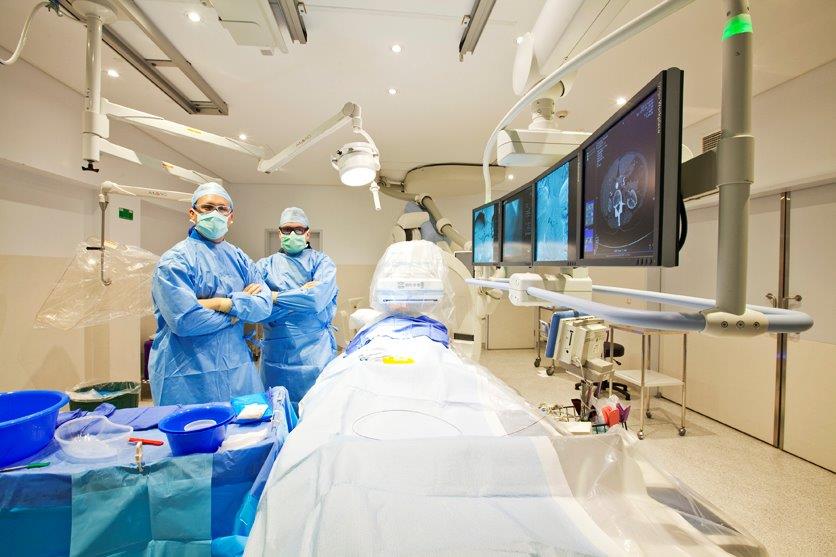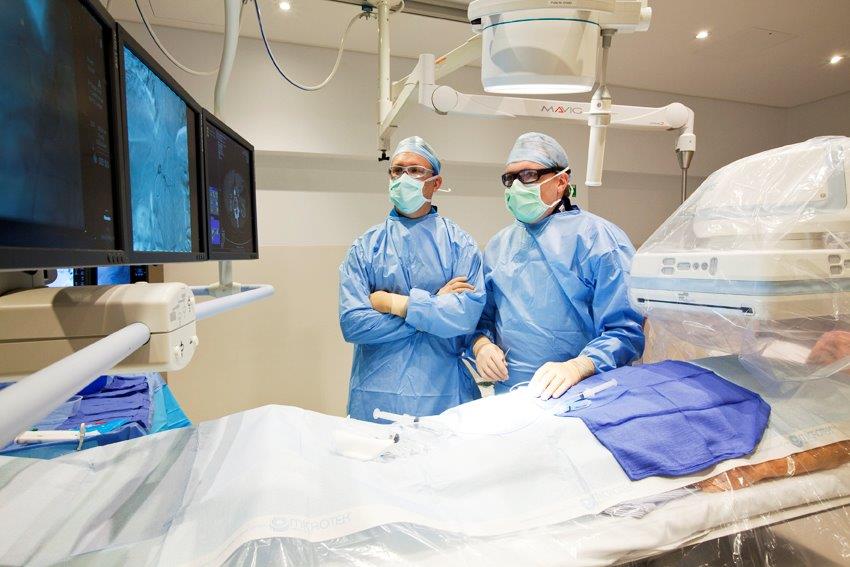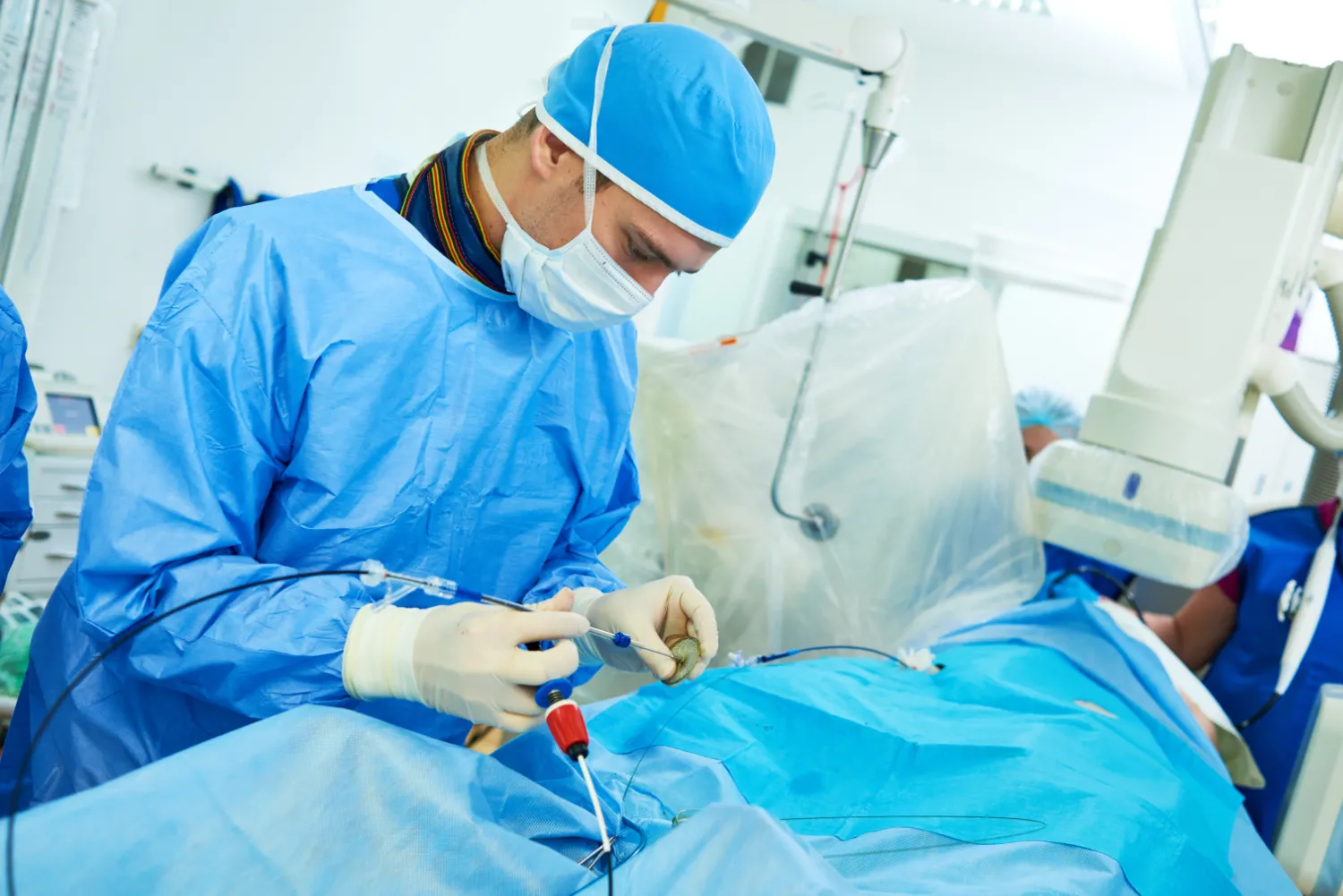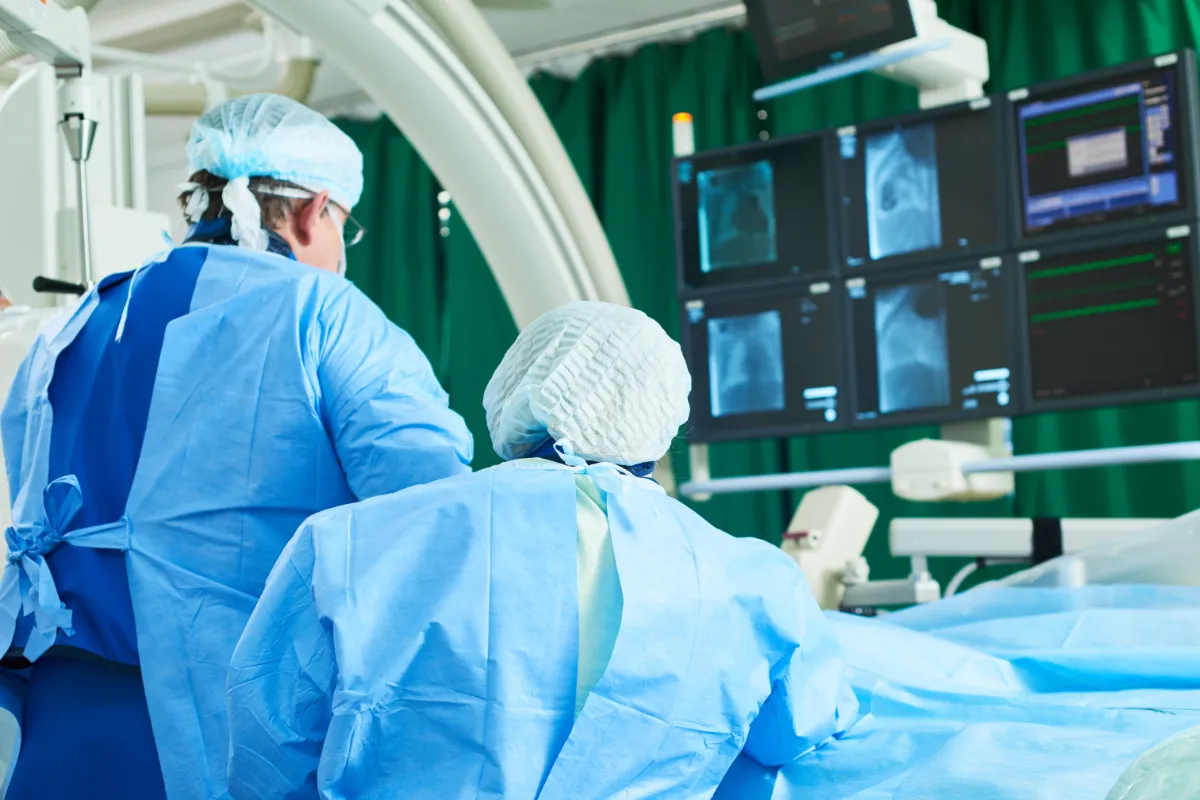
What is Thermal ablation?
Thermal ablation is a minimally invasive technique to treat tumours in many body systems, but mostly involving the liver, kidneys, bone and lung. Several different typical of percutaneous ablation are available, including radiofrequency ablation, microwave ablation, and cryoablation.

Why perform Thermal ablation?
The aim of tumour ablation is to destroy the tumour. In most cases this is done with curative intent, though occasionally this can be done for relief of local effects of the tumour.

How does Thermal ablation work?
Thermal ablation can be performed under conscious sedation or general anaesthetic in an operating room with specialised medical imaging equipment, including CT and ultrasound. Your interventional radiologist will use a CT scanner, ultrasound, or both to place a needle through the skin into the tumour. Once the correct position has been confirmed, the tip of the needle is activated to either heat at very high temperature, or freeze at very low temperature. The size of the treatment zone is determined by time and power settings, and can be monitored throughout the procedure. The tissue within the field of treatment is destroyed by the extreme temperature. This can often be performed as day surgery, but sometimes patients are admitted overnight.
You will often have a CT scan immediately after the treatment or the following day as a baseline. Following this you will have further CT or MRI scans 4-6 weeks after treatment.
Contact Us
appointments:
For appointment requests, please phone 0497 052 070. For general enquiries, please complete the contact form and a member of the VIRQ team will respond shortly.
Address:
Suite 20, 3 Doherty Street, Birtinya, QLD, 4575, Australia
Email:
Phone:
For all appointments and enquiries, please phone:
Our office is attended Monday - Friday from 9am - 5.30pm.
